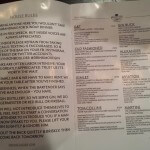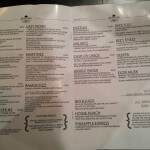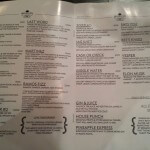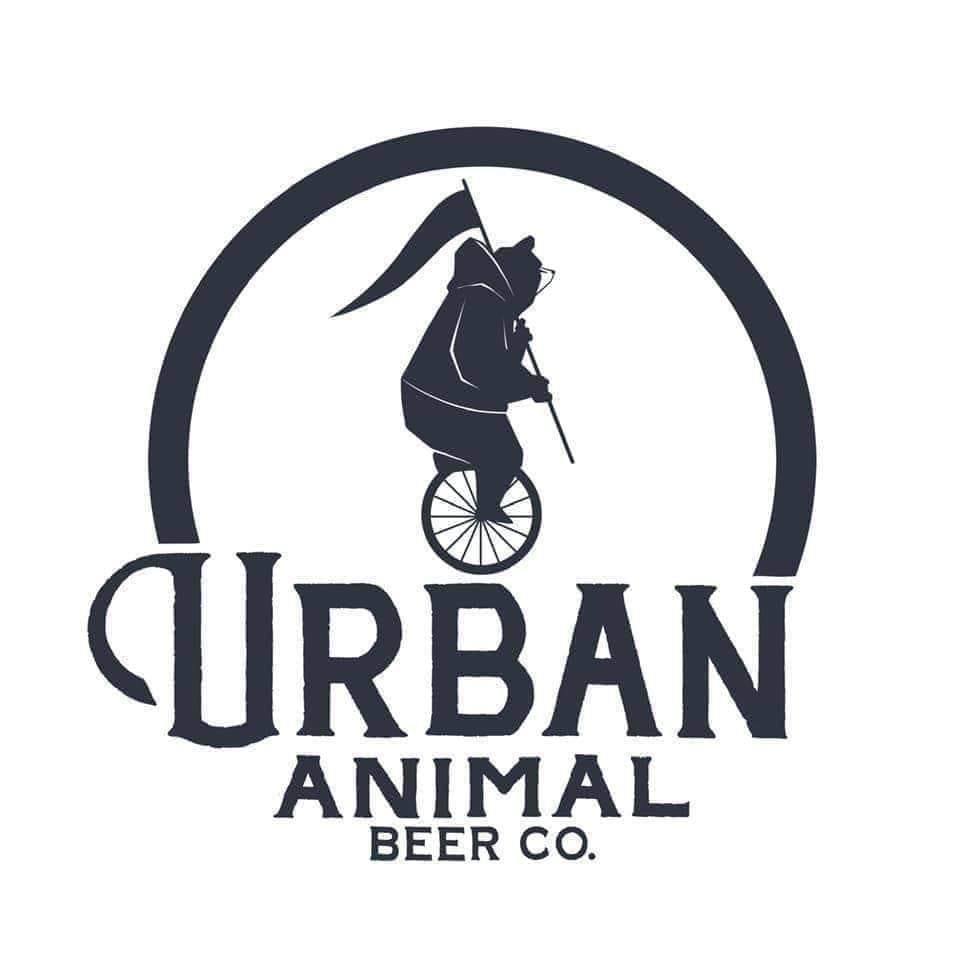Considering 42-year-old bartender Nate Windham has been the first and last word on Colorado Springs mixed drinks since 1998, the man remains remarkably humble and approachable.
It’s that attitude that’s consistently drawn regulars, whether it be to Palapa’s Surfside or The Blue Star or his latest venture, Brooklyn’s on Boulder Street, the new gin tasting room from Lee Spirits Co.
In fact, Windham helped cousins Ian and Nick Lee craft the gin’s original recipe three years ago, when the trio first began talking about a speakeasy, and wrote the menu the bar, with the help of Ian and former Urban Steam employee Eliza Lovett, now serves to packed crowds every weekend.
And though “gin speakeasy” might trip the trendy trigger, Windham’s not all about the latest rage. For instance, he hates block ice.
“That’s all crap,” he says in an interview with the Report. “If guys want to do it, that’s totally fine, but I don’t think it makes a better drink. I think it melts just as fast.”
He’s also quick with praise, like with his opinion of Eric Nicol of The Principal’s Office.
“Eric’s fantastic,” Windham says. “If it was my place, I would be doing it a little bit different, but Eric does a great job, he really does a great job. He’s got a beautiful back bar: Probably — not even probably — he’s got the best back bar in the city, hands down.”
And with New Year’s Eve coming tomorrow, and Brooklyn’s getting ready to party Like Gatsby Would, what better time to catch up on the latest with Colorado Springs’ best?
Rocky Mountain Food Report: So when did Lee Spirits come onto your radar?
Well, actually Ian started working with me at The Blue Star, because he and Nick had gone to [owner] Joe [Coleman] just about business advice and getting started. … Ian told him that eventually they wanted to have a bar as their tasting room. So Joe suggested, “Why don’t you go work behind the bar with Nate every now and then and you can get some hands on experience?”
So he started working with me on Wednesdays and we did that for a while and I got to know them. Then we started building the recipe for the gin. So they’d come in every three or four days and taste me on the new batch of gin and we’d talk about it. “I think the juniper’s a little strong” or “I can really taste the coriander.” So, we’d kind of bounce things around. I think we did nine, 10, 11, 12 batches. Then we settled on this recipe.
You know, Junípero from San Francisco’s always been one of my favorites, so this is loosely modeled after that, but with a pre-Prohibition kind of twist. We really wanted a gin that stood up to era-correct cocktails. All the gins now, when we go to make classic cocktails, we have to change the recipes around here and there to make the gins fit a little better. And our gin’s really built to fit into that without much change.
Is that a sweetness thing?
It’s mainly because gin today is distilled so much better than gin yesterday was. The distillation practice has gotten so much better; the filtration has gotten so much better. So they’re just able to put out a softer gin, so you can actually use a little more of it in classic recipes than you used to be able to. So our gin is extremely dry, very juniper-heavy without being overwhelming.
It’s even drinkable straight.
Totally. And that’s really what we tried to do. Every batch that we would taste we would taste straight. … And I’m lucky enough: I’ve had a couple of tastes of some pre-Prohibition gin. So, I’ve had a gin from 1917 and I’ve had a gin from 1921.
Do they keep?
There’s a lot of collectors out there that get those small bottles and they’ll dip them in wax. And so then, yeah — once you crack them them open it’s like the day you put them in the bottle. It was awesome. You know, I found them on eBay. I’ve got all kinds of stuff. I’ve had Crown from the ‘40s, I’ve had dry vermouth from the ‘20s. So, I had a loose idea of the direction that I wanted to go with the gin, and thankfully it was the same direction they wanted to go with it.
So this has been open about a month now?
Yep. So, three years ago Ian and I started talking about the speakeasy and how we were going to do the speakeasy and what that was going to be like.
Tell me what you’re doing here.
So, I’m the head bartender here. So, I write all the cocktails and the menus. Ian and I sat down and came up with the whole classic list. And we picked those classics because, number one, they were some of the most common drinks for people to recognize. And number two, we picked out the ones we thought would showcase our gin the best. So, we’ve got 15 classics and eight seasonals.
Ian Lee: And when I tell people about the seasonals, because they’ve always asked me why we have seasonals, I try to explain to them that we attempted to find seasonal flavors but try to model them after cocktails we felt like would have been in the ‘20s. So, not using things that wouldn’t have been at their disposal. We were using things like apple and lavender. … And so because we came up with that concept we decided to pick slang terms from the ‘20s and name cocktails after slang terms.
Windham: The great thing about Ian is that he and I see completely eye-to-eye on everything this place should be. When we started talking about no cocktail napkins, and I was like, “Man, I really want linen cocktail napkins.” And he was like “Linen cocktail napkins would be awesome!” It was just so cool to not have somebody that was like, “Oh, it’s going to be so expensive” and “How would we do that?” So, it’s been neat to have somebody here with me that identifies exactly with what I want to have in this bar.
And then also I kept in mind that we were going to have a lot of people that came in here that said, “Oh, I don’t like gin” or “I’ve never drank gin” or “I never liked gin.” That’s the only [base spirit] we can use. We’re not really a bar, we’re a tasting room. So the whole menu is written around our gin. And I tried to make the seasonal cocktails as approachable as possible. The gin stands out and you can taste it but it’s not gin. I used apple cider because apple cider really cuts back the juniper on that gin. We sweeten it with a little bit of grenadine so that herbleness kind of dissipates a little bit more. And it’s only those three ingredients.
And it’s gone over well. People have really enjoyed a lot of the seasonal drinks, which always makes me happy because we’ve got an incredible list of classic drinks, some of the best drinks that have ever been created, and for people to come in and pick my drink over those drinks, it’s awesome.
We hand-crush all of our ice. We make all our own juices, we use the highest quality products. Since we’re only a tasting room, we have to kind of be frugal about the liqueurs that we choose, because by law we’re really not supposed to have anything in here besides what we make. But the state of Colorado has given the tasting rooms a little bit of leeway so they can have a handful of liqueurs on hand to show people what they can do with their spirit.
So you’ve got some vermouth and stuff like that?
Yeah. I think we have seven things that we don’t make. But then I make our crème de violette. I make our own dark crème de cacao. I make our own lime cordial. I make our own tonic syrup. We really try to run the place like it’s the 1920s.
So is that your own bitters?
Not yet, but we’re very close to that. And you know there are some things like Angostura Bitters — I can’t recreate Angostura Bitters, it’s what everybody has in their mind. So it’s hard to replace that one. Eventually we’ll have a Boker’s-style bitters, which was a pre-Prohibition bitters; we’ll have our own orange bitters. There’s a lot that we can make.
What do you do for your whiskey lovers, your Old Fashioned drinkers?
We have an Old Fashioned. So, when the Old Fashioned was created in the early 1800s, the name of that drink was a Cocktail. So, when you walked into a bar in the early 1800s and ordered a Cocktail, you would say “I want a gin cocktail, or a whiskey cocktail or a brandy cocktail” and it was all that same drink. And then in the 1870s when mixed drinks really started to go, “cocktail” started to become a more broad used term, and so that’s when that drink switched over to an Old Fashioned “blank” cocktail.
So, we make a gin cocktail. The Martinez is another one. The Martinez bridges the gap between the Manhattan of the 1840s and the martini of the 1880s. It’s the first time that we saw gin and vermouth mixed together in a cocktail but it was sweet vermouth because it was more predominant at the time. So it’s another hefty, little bitter, whisky drinkers drink. …
Ian actually works the bar with me, and then Eliza from Urban Steam, so it’s the three of us. And we’re all really good at walking people through those choices and helping them make the choices and teaching them about what we’re doing.
Anything else? Anything coming up?
In February or so we’ll have a few more gins coming out. We’re working on an aged; we’re going to have an Old Tom; and we’ll have a Navy-strength. … We’re going to start working on a sloe gin after the holidays. But then I’m making liqueurs here, so we’re going to start marketing some of the liqueurs. People have been going crazy over them. And then we’re going to start selling our own tonic syrup that we make; I’m making our own ginger beer, so I’m going to start bottling and selling it. So we’ve got a handful of things that we’re working on.
How has business been?
Crazy. Crazy. It’s been a weird month, because almost every week we’ve had something — a snowstorm, or Thanksgiving — but it’s been busy every single night. Every single night. There hasn’t been one night where I wasn’t like, “Oh, man, we’re busy tonight.”
The one thing that irritates me is we’ve heard a lot of “Man, finally the Springs has a good cocktail bar!” You know how long I’ve been doing this!? Killing myself for this! [Laughs] But I get to bring in all my old cocktail books — those are all my old cocktail books up there.
It’s exactly what I would have wanted in a cocktail bar.
[Images: Bryce Crawford]









